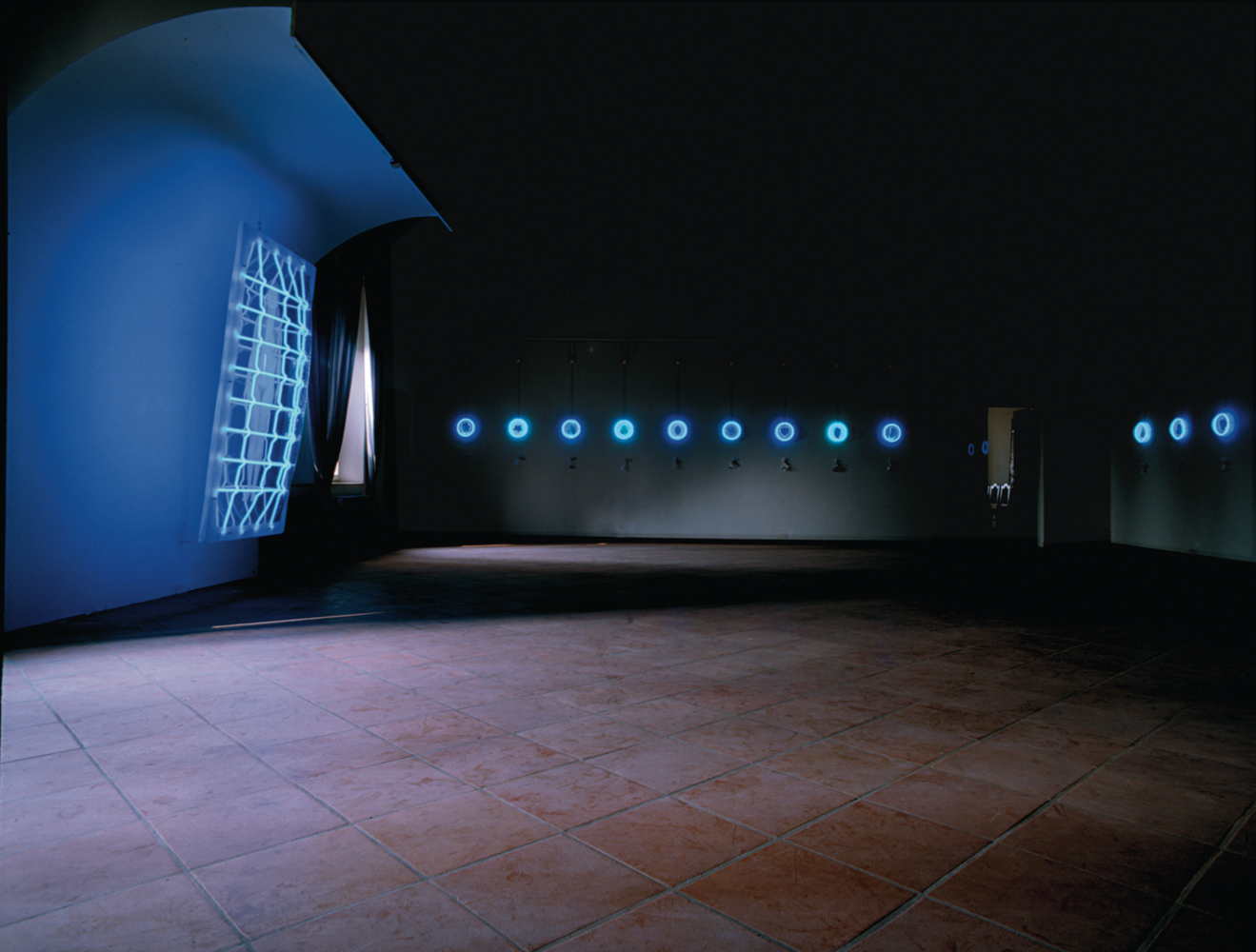I Antropologia | Anthropology
I trenta ritratti spirituali nascono da una donazione fatta al Museo di Storia Innaturale, da altrettante persone. Ciascuno ha offerto un piccolo oggetto che ha ritenuto emblematico, come un reperto, ogni oggetto è stato chiuso in un sacchetto di plastica ed etichettato con nome, cognome, peso e altezza (misure che danno il volume della persona sulla terra) e luogo di provenienza. Ogni reperto si accompagna a una semisfera in plexiglas, posta a 160 cm da terra, che contiene una forma, il ritratto spirituale, che si attiva grazie a una fotocellula a raggi infrarossi. Quando un visitatore si accosta per leggere l’etichetta il suo calore vitale, accende una luce al neon, all’interno della semisfera. La luce fa sì che la forma si colori, benché il neon sia neutro e la forma bianca. Il tubo di vetro del neon è polverato con un materiale la cui frequenza sollecita i pigmenti minerali che rivestono la forma, creando colori acidi e luminosi. Al centro della sala è sospesa una cupola in plexiglas con una grata di tubi al neon che ne segue la forma e che per il precedente principio il visitatore attiva facendo apparire l’immagine, tridimensionale e a grandezza naturale, di una donna.
Materiali: plexiglas, neon, tubi in vetro, argon, pigmenti minerali, plastica, oggetti vari, fotocellula.
The thirty spiritual portraits come from a donation made to the museum by thirty people. Each one offered a small object that they thought emblematic and like a find. Each object was closed in a plastic bag and labelled with name, surname, weight and height (dimensions that give the volume of the person on the earth) and place of origin. Each find is accompanied by a Plexiglas hemisphere, placed at a height of 160 cm, which contains a form, the spiritual portrait, that is activated by a photo cell and infrared rays. To see the label, people, move closer to the work, and their body heat activates an infrared photocell that switches on a neon lamp inside the hemisphere, whose light makes the form become coloured. This happens although the neon is not dyed and the form is white. The glass pipe containing the neon is dusted with a powder whose natural frequency excites the minerals that cover the form, colouring it. Thirty spiritual portraits constitute the
exhibition and a Plexiglas dome is hung at the centre of the hall through a grating of neon-filled pipes, which follows its convex shape and, by the same principle, is activated by body heat, provoking the appearance of a three-dimensional, life-size image of a woman.
Materials: plexiglas, neon, glass pipes, argon mineral pigments, plastic, various objects, photo cell.
1991 | Sala I Antropologia | Hall I Anthropology


